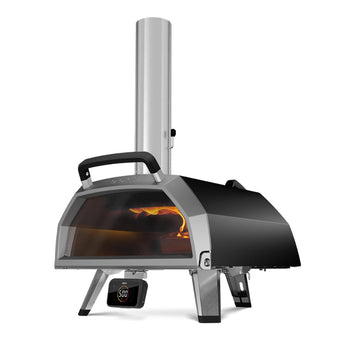Here in the UK, we’re big believers in keeping pizza simple and uncomplicated – quick pizza dough, anyone? – but if you’re looking to take your skills to the next level, you’ve got to give preferments a try. With a mix of flour, water, yeast and time, you’ll add new dimensions of flavour complexity and texture to your dough. But before we get too deep, we need to understand just what preferments are, their role in pizza and why they’re worth your time.

Preferments: What are they anyway?
Preferments, with variations such as the popular biga and poolish, are overnight starters that use both domestic (sold in packets in either dry or active form) and wild yeast (that naturally occurs in the environment).
For more insight, we turn to one of Portland, Oregon’s most acclaimed bakers, Ken Forkish, whose book, “Flour, Water, Salt, Yeast” was a New York Times bestseller and IACP Cookbook Award winner:
“A biga
is a term used in Italian baking for a pre-fermented dough culture. While there is no strict definition, it typically implies a mix of a somewhat stiff dough (60 to 70 percent water) made up of just flour, water, and a very small amount of yeast, which is allowed to ferment for six to 12 hours before being added to the final dough mix. The biga builds up a lot of flavor-producing gas (carbon dioxide and alcohol), acids, and bacteria. When it is added to the final dough mix, the result is bread that captures those flavors in a very good way.”It’s important to note that depending on what kind of dough you’re aiming for, you’ll end up with a wet or dry biga. A wet biga will produce acetic acid, making the bread taste sour, and a dry biga, which is great for sourdough.
Pro tip: Use a wet biga if you want to make dough within 10 to 12 hours; a dry one if you'd like to wait longer and get more of that sour taste.

Poolish,
on the other hand, originally refers to the techniques of Polish bakers who transported their methods to France. According to Forkish:“Like the Italian biga, a poolish is a pre-ferment added to the final dough mix to enhance flavor, in this case with buttery and nutty notes, and improve keeping due to the acidity that accumulates as the culture develops, typically for 6 to 12 hours. A poolish often contains 30 to 50 percent of the total flour in a recipe and generally contains equal amounts by weight of flour and water and a tiny amount of yeast.”
And for another source of excellent info on the subject, we turn to the pages of “Modernist Pizza” by the founder of Modernist Cuisine, Nathan Myhrvold, and head chef of Modernist Cuisine, Francisco Migoya:
“Poolish is a high-hydration (100%) preferment made from flour, water, and instant yeast. [...] One of the most common types of preferment, poolish is widely used by professional pizza makers in North America (though rarely by Italian pizzaioli, who generally prefer to make direct doughs). Because it is based on commercially manufactured yeast, it does not have the tangy flavor of a levain [sourdough starter].”
Pro-tip: A starter is generally quite sticky and thus difficult to manoeuvre with a rubber spatula or bowl scraper. When taking it out of the bowl to measure it or to add it to your dough, use your hands, first dampening them in ice water. The starter won't stick to your wet, cold hands.
Is biga really better?
For some pizzaiolos, the phrase ‘biga is better’ holds a lot of weight. Not only does this preferment add more depth of flavour to a pizza’s base, but it also creates an open crumb structure for lighter, airier dough.
There's no standardised biga recipe and many chefs have crafted their own. For instance, 13-time world Pizza Champion and author of The Pizza Bible, Tony Gemignani says, “Tiga is my slightly more hydrated version of a classic biga starter, which is usually between 50 and 60 percent water. This ‘Tony's biga,’ which I call ‘Tiga,’ has 70 percent hydration.”
Pro tip: Use a biga recipe –like our 100% Biga Dough – to get started. Once you grow more comfortable, you can experiment with your own versions!

Recipes to try: Marinara Pizza, Pineapple Express Pizza, Beetroot and Feta Pizza
Remember, pizza-making is a skill that evolves with experimentation. So, gather your ingredients, roll up your sleeves, and let the aromas of preferments and freshly baked dough fill your kitchen. Embrace the process and may your biga crust be extra tasty!







